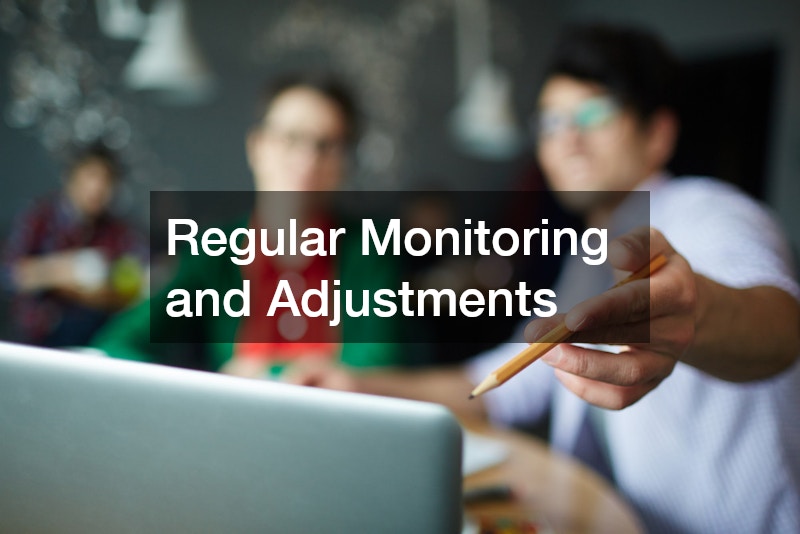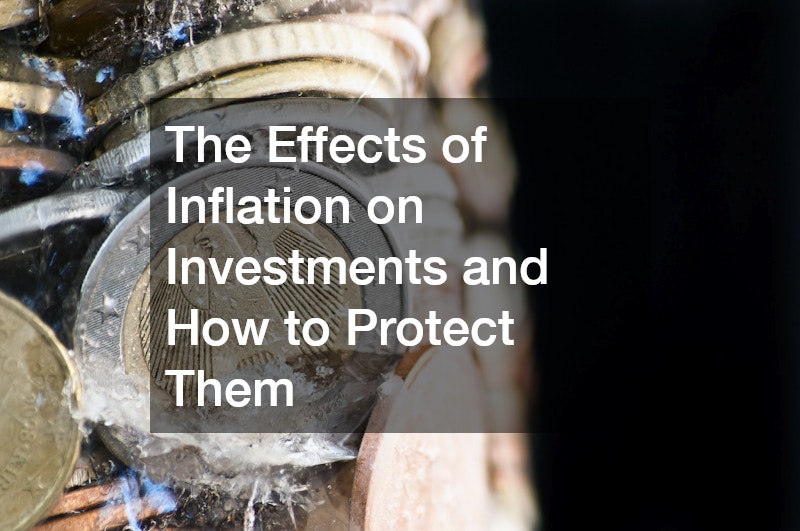Many people’s financial future relies heavily on investments. Many individuals view them as a vital source of additional income due to their accessibility. It is estimated that a significant proportion of the adult population has investments in one form or another.
Investments come in a variety of types and forms, each with different levels of risk and return. Common investment categories include shares, bonds, managed funds, property, and commodities. However, various factors can influence the performance of these investments, with inflation being one of the most critical. This article explores the effects of inflation on investments and strategies for safeguarding them.
I. What is Inflation?
To understand how inflation impacts investments, it’s important to grasp the concept of inflation itself. Inflation refers to the general rise in prices of goods and services over time, leading to a decline in the purchasing power of money. Essentially, your money buys less as prices increase.
In Australia, inflation is commonly measured using indexes such as the Consumer Price Index (CPI), which tracks the changes in prices of a basket of goods and services. The goal of the Reserve Bank of Australia (RBA) is to keep inflation within 2–3% over the economic cycle. While current inflation sits around 3%, it has previously peaked at higher levels, posing challenges for investors.
II. How Does Inflation Affect Investments?
Inflation can have both positive and negative impacts on investments. Understanding these effects is essential for making informed financial decisions.
A. Erosion of Purchasing Power
One of inflation’s most significant impacts is the erosion of purchasing power. As prices rise, the real value of money diminishes, meaning you can buy fewer goods or services for the same amount of money.
If your investment returns do not outpace inflation, your purchasing power declines over time. This is particularly relevant for fixed-income investments, such as government bonds, where returns are set but can be rendered less valuable by inflation. Investors should consider inflation when selecting investments to ensure their returns maintain or grow their purchasing power.
B. Positive Impacts on Certain Investments
While inflation can be detrimental, some investments may benefit from it. For instance, shares in companies that can pass on higher costs to consumers may see increased revenues and profits during inflationary periods. This could lead to higher share prices for investors. However, not all shares benefit equally—businesses with high fixed costs or those heavily reliant on economic stability may struggle.
Property is another asset class that can benefit from inflation. As prices rise, property values and rental yields typically increase. Additionally, if an investor holds a fixed-rate mortgage, inflation effectively reduces the real value of their debt.
C. Fixed vs. Variable Investments
Fixed investments, such as term deposits, provide predictable returns but are vulnerable to inflation’s eroding effects. Conversely, variable investments, such as shares and property, have the potential to outperform inflation. These assets often adjust to market conditions and can provide inflation protection. However, they also carry greater risk, requiring careful management and a solid understanding of market dynamics.
III. Inflation and Savings
Savings accounts are a common form of investment in Australia. However, inflation can significantly impact the value of savings.
When the inflation rate exceeds the interest rate on savings accounts, the real value of those savings declines. For example, if inflation is 3% but your savings account offers only a 2% interest rate, your purchasing power decreases by 1% every year. While the nominal value of your savings may appear to grow, its real value diminishes over time.
To combat this, Australians should explore alternative options, such as high-interest savings accounts or investments with returns that outpace inflation.
IV. How Does Inflation Impact Rates of Return?
Inflation directly affects the rate of return on investments. The nominal rate of return represents the raw percentage increase in investment value, while the real rate of return accounts for inflation.
For instance, if your investment yields a nominal return of 6% but inflation is 3%, your real return is only 3%. This is particularly concerning for fixed-income investments, which are more vulnerable to inflation eroding their value. Conversely, assets like shares and property may offer returns that exceed inflation, depending on market conditions.
Understanding the distinction between nominal and real returns is crucial for evaluating the true performance of your investments.
V. Protecting Investments Against Inflation
Despite the challenges posed by inflation, there are strategies to protect your investments and even capitalise on inflationary periods.
A. Diversify Your Portfolio
Diversification involves spreading your investments across various asset classes, industries, and regions to minimise risk. By holding a mix of shares, property, bonds, and commodities, you can reduce the impact of inflation on any single investment type.
B. Invest in Inflation-Linked Bonds
Inflation-linked bonds, such as Treasury Indexed Bonds issued by the Australian Government, adjust their principal and interest payments to account for inflation. This provides a safeguard against rising prices, ensuring the real value of your investment remains intact.
C. Consider Real Assets
Real assets, including property, commodities, and infrastructure, often perform well during inflationary periods. Property values and rental yields typically rise alongside inflation, while commodities such as gold and oil serve as traditional inflation hedges. However, investing in real assets requires careful consideration of market conditions and associated risks.
VI. Tips for Investing in an Inflationary Climate
Adapting your investment strategy during periods of inflation is essential for protecting your wealth and achieving long-term financial goals.
A. Regular Monitoring and Adjustments

Stay informed about economic indicators, such as inflation rates, GDP growth, and employment statistics, to understand how inflation may impact your investments. Regularly review your portfolio and make adjustments to align with changing economic conditions.
B. Maintain a Long-Term Perspective
While inflation can cause short-term volatility, maintaining a long-term perspective is vital. Financial markets typically recover over time, and many investments continue to deliver positive returns despite inflationary pressures. Focus on your broader financial objectives rather than reacting to short-term fluctuations.
C. Explore High-Interest Savings Accounts
High-interest savings accounts can help offset inflation’s impact on your savings. Look for accounts with interest rates that exceed inflation to preserve the purchasing power of your funds. Be mindful of account conditions, such as minimum balances and withdrawal restrictions.
D. Alternative Investments
Consider diversifying into alternative investments such as art, wine, or rare collectibles. These assets can offer protection against inflation and add a unique dimension to your portfolio. However, they require specialised knowledge and carry risks, including market volatility and liquidity challenges.
E. Understand Your Risk Tolerance
Assessing your risk tolerance is essential when investing during inflationary periods. While riskier assets may offer higher returns, they also carry greater potential for loss. Strike a balance between stability and growth to achieve your financial goals while managing inflation’s impact.
Conclusion
Inflation presents both challenges and opportunities for investors. By understanding its effects and adopting informed strategies, Australians can protect their wealth and capitalise on the potential benefits of inflationary periods. Diversifying your portfolio, considering inflation-linked and real assets, and maintaining a long-term perspective are key steps in navigating an inflationary environment.
By taking proactive measures, you can ensure that your investments continue to grow and support your financial aspirations, even in the face of rising prices. Protecting your purchasing power is not only a matter of preserving wealth but also a step toward securing your financial future.
